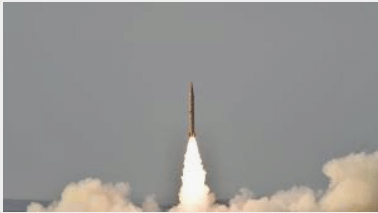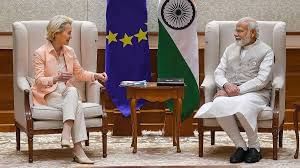UPSC Daily Current Affairs: 22nd June 2024 | Current Affairs & Hindu Analysis: Daily, Weekly & Monthly PDF Download
GS-I/Indian Society
A story of displacement to one of empowerment
Source: The Hindu

Why in News?
According to a recent interim report by a State government panel, over 45% of the Sri Lankan Tamils living in rehabilitation camps in Tamil Nadu were born in India.
Causes of Tamilian Displacement
- Ethnocentric Violence: The main reason for the displacement was ethnocentric violence in Sri Lanka, primarily targeting the Tamil population. This violence caused extensive loss of life and property, compelling Tamils to escape for their safety.
- Proximity and Linguistic Commonality: Many Tamils opted for India, especially Tamil Nadu, because of its close geographical proximity and the shared Tamil language, which made it a more accessible and familiar refuge.
Government Initiatives
- Provision of Basic Amenities: Refugees receive free housing, electricity, water, and monthly food rations. Additionally, they get a monthly cash dole.
- Educational Support: Access to government schools is provided, along with a monthly stipend of ₹1,000 for those pursuing higher education. One-time educational support includes ₹12,000 for arts and science students and ₹50,000 for engineering students.
- Welfare Schemes: Refugees are eligible for various welfare schemes available to the people of Tamil Nadu, including the women’s rights scheme providing ₹1,000 per month.
- New Housing: Recently, the Government of Tamil Nadu has constructed new homes for about 5,000 Sri Lankan Tamils.
- Renaming Camps: In an effort to destigmatise, the refugee camps were renamed as Sri Lankan Tamil Rehabilitation Camps in a government order dated October 28, 2021.
Bringing Back Dignity
- Educational Achievements: The welfare schemes have led to 100% school enrollment and over 4,500 graduates from the camps.
- Breaking Caste Barriers: As refugees, Sri Lankan Tamils are categorized under the Refugee category, which has helped in break free from caste barriers.
- Government Recognition: The renaming of refugee camps to Sri Lankan Tamil Rehabilitation Camps is a step towards restoring the dignity of the displaced population.
- Advocacy and Support: Continuous advocacy by organizations like OfERR, support from donors, and political parties have facilitated the patronage extended by the Government of Tamil Nadu and the Government of India.
- Potential for Future Contribution: The transformation of refugees into resource persons capable of contributing to nation-building when they return to Sri Lanka.
Current Challenges
- Legal Limitations: Indian laws currently do not permit local integration by granting citizenship to Sri Lankan refugees.
- Economic and Health Crises: The COVID-19 pandemic and the economic crisis in Sri Lanka have slowed down the process of refugees returning to their homeland.
- Uncertain Future: Despite the improvements in their living conditions and dignity, Sri Lankan Tamils in India continue to live with uncertainty about their long-term future.
Way forward
- Amend Legal Frameworks: Advocate for amendments in Indian laws to allow for local integration and citizenship for long-term refugees, providing them with a secure legal status and equal rights.
- Strengthen Economic Opportunities: Develop targeted economic empowerment programs, including vocational training and employment initiatives, to enhance self-sufficiency and reduce dependency on state support, ensuring a sustainable livelihood for the refugees.
GS-I/Geography
Summer Solstice
Source: Indian Express

Why in News?
June 21st marks the Summer Solstice in the northern hemisphere.
About Summer Solstice
- The term "solstice" in Latin means “the sun stands motionless.”
- For those living north of the Equator, June 21, 2021, was the longest day of the year.
- This day receives the highest amount of solar energy and is technically known as the summer solstice, marking the longest day of the summer season.
- It occurs when the sun is directly overhead at the Tropic of Cancer, or at 23.5 degrees north latitude.
- Conversely, the Southern Hemisphere experiences its peak sunlight on December 21, 22, or 23, which coincides with the winter solstice in the northern hemisphere, resulting in the longest nights there.
Why do we have summer solstice?
- As Earth rotates on its axis, the Northern Hemisphere receives more direct sunlight between March and September each day.
- Consequently, people in the Northern Hemisphere experience summer during this period.
- For the remainder of the year, the Southern Hemisphere receives more sunlight.
- During the solstice, Earth's axis is tilted so that the North Pole is tipped towards the sun, while the South Pole is tilted away from it.
GS-I/History and Art & Culture
PM inaugurates Nalanda University
Source: Hindustan Times

Why in News?
The Prime Minister has inaugurated the new campus of Nalanda University, an international institution situated near the ancient ruins of Nalanda in Rajgir, Bihar.
Revival of Nalanda University
- The idea to revive Nalanda University was proposed by former president Dr APJ Abdul Kalam in 2006, leading to the passing of the Nalanda University Bill in 2010.
- The university’s revival was operationally launched in 2014 from a temporary location.
- Former president Pranab Mukherjee laid the foundation stone for the permanent campus in 2016, with construction starting in 2017 and culminating in today’s inauguration.
- The Parliament established the university following decisions from the second East Asia Summit (EAS) in 2007 and the fourth EAS in 2009.
International Collaboration and Courses
- Nalanda University has participation from 17 countries, including Australia, Bangladesh, Bhutan, China, Indonesia, and others, which have signed MoUs to support the university.
- It offers 137 scholarships to international students, sponsored by the ASEAN-India Fund, BIMSTEC, and Bhutan’s Ministry of External Affairs.
- The university provides postgraduate and doctoral research courses, as well as short-term certificate courses.
Historical Background
- Nalanda University was founded in the 5th century CE in the ancient kingdom of Magadha (present-day Bihar) and was the world’s first residential university.
- Establishment and Patronage:
- The Gupta dynasty, led by Emperor Kumaragupta I, founded Nalanda University in 427 AD, making it a leading center for Buddhist studies.
- It received generous support from rulers like King Harsha and the Pala Empire, which boosted its prestige and influence throughout Asia.
- Countries:
- The university attracted scholars from China, Korea, Japan, Tibet, Mongolia, Sri Lanka, and Southeast Asia.
- Subjects taught included medicine, Ayurveda, Buddhism, mathematics, grammar, astronomy, and Indian philosophy.
- Nalanda thrived under the Pala dynasty's patronage during the 8th and 9th centuries CE, making notable advancements in mathematics and astronomy.
- Aryabhatta, an early Indian mathematician and the inventor of zero, was one of Nalanda’s distinguished teachers.
Admission and Academic Rigor
- Admission to Nalanda was highly competitive, akin to today’s top institutions like IIT, IIM, or Ivy League schools.
- Students underwent rigorous interviews and were mentored by scholars and Buddhist masters like Dharmapala and Silabhadra.
- The university’s library, known as ‘Dharma Gunj’ or the ‘Mountain of Truth,’ contained 9 million handwritten palm-leaf manuscripts, making it the richest repository of Buddhist knowledge.
Destruction and Rediscovery
- In the 1190s, Bakhtiyar Khilji, a Turko-Afghan military general, destroyed Nalanda University by arson, which burned for three months and destroyed invaluable Buddhist manuscripts.
- Some surviving manuscripts are preserved in the Los Angeles County Museum of Art and the Yarlung Museum in Tibet.
- The university was rediscovered in 1812 by Scottish surveyor Francis Buchanan-Hamilton and officially identified in 1861 by Sir Alexander Cunningham.
Scholarly Influence
- Nalanda’s intellectual legacy includes contributions from scholars like Nagarjuna, known for his foundational work in the Madhyamaka school of Mahayana Buddhism, and his disciple Aryadeva.
- Dharmapala’s commentaries further enriched Buddhist philosophy.
- These scholars’ insights into metaphysics and epistemology extended Nalanda’s influence, shaping religious and philosophical thought across Asia and inspiring subsequent generations of thinkers.
GS-II/International Relations
SIPRI Report Highlights Global Nuclear Arsenal Risks
Source: The Hindu

Why in News?
A recent report by the Stockholm International Peace Research Institute (SIPRI) highlighted the increased risk and instability associated with the ongoing modernization and expansion of nuclear arsenals worldwide.
About SIPRI
- SIPRI is an independent international institute focused on research into conflict, armaments, arms control, and disarmament.
- It was established in 1966 in Stockholm, Sweden.
- SIPRI provides data, analysis, and recommendations based on open sources to policymakers, researchers, media, and the public.
Key Highlights of the Report
- Global Nuclear Arsenal Modernisation:
- All nine nuclear-armed countries (USA, Russia, UK, France, China, India, Pakistan, North Korea, and Israel) are continuing to modernize their nuclear arsenals.
- As of January 2024, the total global inventory of nuclear warheads is approximately 12,121, with around 9,585 in active military stockpiles.
- About 2,100 warheads are on high operational alert, mainly held by Russia and the USA, with China possibly having some on high alert for the first time.
- Major Nuclear Powers:
- Russia and USA: Together, they hold nearly 90% of all nuclear weapons.
- China: Increased its nuclear arsenal from 410 to 500 by January 2024, growing faster than any other country.
- North Korea: Has around 50 warheads and materials for up to 90.
- Israel: Enhancing its arsenal and plutonium production capabilities, though not officially acknowledged.
- India and Pakistan:
- India: Holds 172 nuclear warheads as of January 2024, ranking 6th globally, and focuses on longer-range weapons aimed at China.
- Pakistan: Has 170 nuclear warheads.
- Nuclear Diplomacy Challenges:
- Efforts in nuclear arms control and disarmament have faced setbacks due to conflicts in Ukraine and Gaza.
- Diplomatic tensions between Iran and the USA, along with the Israel-Hamas war, complicate the situation.
- Major setbacks include Russia’s suspension from the New START treaty and withdrawal from the Comprehensive Nuclear-Test-Ban Treaty (CTBT) ratification.
- Global Security Concerns:
- The report also addresses issues like military expenditure, arms transfers, and the role of private military companies in conflicts.
- Additional risks involve artificial intelligence, outer space, cyberspace, and protecting civilians in war zones.
Challenges and Way Forward for India’s Nuclear Program
- Challenges:
- India confronts nuclear threats primarily from Pakistan and China due to border tensions and terrorism.
- The escalating risk of cyberattacks underscores the importance of safeguarding nuclear systems.
- The rapid advancement of hypersonic missiles, autonomous weapons, and artificial intelligence poses new challenges for nuclear deterrence strategies.
- India’s nuclear energy program also grapples with issues such as radioactive contamination, environmental impacts, and health concerns.
- Way Forward:
- India should maintain a credible minimum deterrence while responsibly modernizing its nuclear arsenal with advanced delivery systems.
- Investing in technologies like thorium-based reactors could enhance sustainability and efficiency.
- India should actively engage in global nuclear governance initiatives like the Nuclear Security Summits and the Global Initiative to Combat Nuclear Terrorism (GICNT).
- Pursuing confidence-building measures with Pakistan and China is essential to mitigate nuclear risks and enhance regional stability.
GS-II/Government Policies & Interventions
Criminal Justice System
Source: TH

Why in News?
Recently, a false rape accusation and resulting imprisonment exposed various systemic deficiencies in our law enforcement system and intricate social issues that require immediate attention.
How is the Criminal Justice System (CJS) in India?
- The criminal justice system of any state comprises agencies and processes established by governments to administer justice, control crime, and punish those who break the law.
- India’s criminal justice system is governed by the Indian Penal Code (IPC), which dates back to 1860.
- According to Article 246 of the Constitution of India, policing, public order, courts, prisons, reformatories, and related institutions are under the jurisdiction of the states.
- However, Union laws oversee the Police, Judiciary, and Correctional Institutes, forming the foundational components of the criminal justice system.
- Structure of the Criminal Justice System:
- Police Investigation: Section 161 of the Criminal Procedure Code, 1973 authorizes investigating officers to interrogate individuals with knowledge of a case and record their statements.
- Prosecution: Prosecutors charge individuals with crimes and seek to prove their guilt in a court of law.
- Adjudication: Courts determine guilt and sentence offenders based on aggravating and mitigating circumstances, the offender’s background, and potential for rehabilitation.
- Corrections: The prison system in India focuses on the reformation and rehabilitation of inmates through education, vocational training, labor, yoga, and meditation.
What are the Challenges Involved in the Criminal Justice System in India?
- Pendency of Cases: As of July 2023, India had over 50 million pending cases across all courts, with 87.4% in subordinate courts, 12.4% in High Courts, and nearly 182,000 cases pending for over three decades. The Supreme Court had 78,400 pending cases.
- Judicial Vacancies: Despite a target of 50 judges per million people, India has only 21 judges per million, contributing to delays in the judicial process.
- Slow Progress in Fast-Track Courts: Fast-track courts have not functioned optimally, as new courts with required infrastructure and dedicated judges are not established specifically for fast-tracking cases. Existing courts are often designated as fast-track courts, leading to judges managing regular caseloads alongside expedited cases.
- Abuse of Police Power: Police are frequently accused of misuse of authority, including unwarranted arrest, unlawful detention, improper searches, harassment, custodial violence, and deaths. Powers under preventive laws are increasingly being extended to the police.
- Complex Mechanism: Present-day justice mechanisms are overly complex and inaccessible to marginalized populations. The system prioritizes institutional arrangements over building capacity, resulting in further marginalization of vulnerable sections of society.
- Perceived Biases: Compared to their proportion in the general population, Adivasis, Christians, Dalits, Muslims, and Sikhs are disproportionately represented in Indian prisons.
- Human Rights Violations in Prisons: Authorities use physical force to extract confessions and investigate crimes, with instances of torture reported, including custodial rape, molestation, and other forms of sexual abuse, particularly affecting women.
How can the Criminal Justice System in India be Reformed?
- Bail Reforms: The Supreme Court established the principle of "bail is rule and jail is exception" in the landmark 1978 case of State of Rajasthan v. Balchand alias Baliya. The Law Commission of India's 268th Report emphasized the urgent need to reduce detention periods and recommended a revision of bail laws to address this issue.
- Revitalizing Fast-Track Courts: There is a need to expedite the resolution of long-pending session cases to ensure that fast-track courts operate as intended.
- Reforming Legal Aid: Enhancing training, mentoring, and capacity-building for young professionals is essential to improve the quality of socio-legal services and enhance the effectiveness of the criminal justice system (CJS).
- Addressing Judicial Vacancies: Effectively filling judicial vacancies is crucial for maintaining a functional and equitable judicial system. Exploring options like the All India Judicial Service (AIJS) for recruiting judges at the levels of additional district judges and district judges could be beneficial.
- Utilizing AI in Criminal Case Management: AI technology can assist judges in making decisions regarding bail, sentencing, and parole by evaluating the risk of reoffending among offenders.
What Commissions have been set up to Reform CJS?
- National Police Commission (NPC): It recommended that there must be a judicial enquiry in cases of custodial death or rapes.
- Malimath Committee: It recommended that there is a need to have a separate police force for maintaining law and order and crime investigation.
- All India Jail Reforms Committee (Mulla Committee): It emphasised the recruitment of proper and trained staff for the administration of jails and, for this purpose, a correctional service should be established.
- Krishnan Iyer Committee: It recommended the appointment of women staff in the police for handling women and child offenders.
What are Judicial Pronouncements Related to Reformation of CJS?
- Prakash Singh v. Union of India Case, 2006: The Hon’ble Supreme Court stated that a state security commission must be established in each state to keep a check on the work of the police and observe that there is no influence.
- S.P. Anand v. State of Madhya Pradesh Case, 2007: Prisoners have basic rights to a healthy life even though their right to liberty and free movement is restricted.
- State of Gujarat v. High Court of Gujarat Case, 1988: It was held that reasonable wages must be paid to prisoners in jail for the work or labour they have done.
- Hussainara Khatoon v. Home Secretary, State of Bihar Case, 1979: Keeping the undertrials in jail for a longer period than their punishment is a clear violation of their fundamental rights guaranteed under Article 21.
- Prem Shankar Shukla v. Delhi Administration Case, 1980: The practice of handcuffing is inhuman, unreasonable and harsh, and thus, an accused person must not be handcuffed in the first instance.
Conclusion
The Indian criminal justice system faces challenges such as a large backlog of cases, inefficiency, lack of resources, poor infrastructure, and insufficient training for personnel. However, efforts are being made to reform and improve the system, particularly to ensure that marginalised communities have better access to justice.
GS-II/Polity and Governance
Mercy Petition
Source: The Hindu

Why in News?
The opposition party has raised concerns over the proposed Rs 72,000-crore infrastructure development plan on Great Nicobar Island, labeling it as a significant danger to the island’s native residents and delicate environment. They are urging the suspension of all approvals and advocating for a comprehensive and unbiased evaluation of the project, including assessment by relevant Parliamentary committees.
Great Nicobar Island
Location and Features:
- The southernmost and largest of the Nicobar Islands.
- Area: 910 sq km of tropical rainforest.
- Home to India’s southernmost point, Indira Point, located 90 nautical miles from Sumatra.
- Part of the Andaman and Nicobar Islands, which include 836 islands divided into two groups separated by the 10° Channel.
- Hosts two national parks, a biosphere reserve, and small populations of Shompen, Onge, Andamanese, Nicobarese tribal peoples, and a few thousand non-tribal settlers.
The Great Nicobar Island Project
- Project Overview:
- Launched in 2021.
- Aimed at developing the southern end of the Andaman and Nicobar islands.
- Includes a trans-shipment port, international airport, township development, and a 450 MVA gas and solar-based power plant.
- Implementation and Goals:
- Based on a NITI Aayog report highlighting the island’s strategic position.
- Implemented by the Andaman and Nicobar Islands Integrated Development Corporation (ANIIDCO).
- Includes an International Container Trans-shipment Terminal (ICTT) and a greenfield international airport.
- Located near the Malacca Strait, facilitating regional and global maritime trade.
- Strategic and Security Importance:
- The ICTT and power plant site is in Galathea Bay, where there is no human habitation.
- Enhances deployment of additional military forces, larger warships, aircraft, missile batteries, and troops.
- Essential for close surveillance and building a strong military deterrence.
- Critical for India’s national security due to proximity to key waterways and strategic choke points like the Malacca, Sunda, and Lombok Straits.
- Counteracts China’s military presence and expansion efforts in the region, particularly on the Coco Islands.
Concerns and Challenges
- Impact on Tribal Communities:
- Potentially devastating impact on the Shompen and Nicobarese tribes, classified as a Particularly Vulnerable Tribal Group (PVTG).
- Risks to their traditional way of life and the island’s natural environment.
- Environmental Impact:
- Destruction of coral reefs and threats to local species like the Nicobar Megapode bird and leatherback turtles.
- Large-scale deforestation, with the felling of nearly a million trees.
- High seismic activity zone raising safety concerns for large infrastructure projects.
- Administrative Issues:
- Accusations of inadequate consultation with the Tribal Council.
- National Green Tribunal (NGT) ordered the establishment of a high-power committee to review environmental and forest clearances.
Way Forward
- Inclusion of Tribal Councils:
- Ensure the involvement of Tribal Councils in decision-making processes.
- Respect traditional knowledge and legal rights under the Forest Rights Act (2006).
- Oversight and Monitoring:
- Establish a high-power committee to oversee environmental and forest clearances.
- Include representatives from environmental groups, tribal councils, and independent experts.
GS-III/Species in News
Discovery of Striped Caecilian in Kaziranga National Park
Source: The Hindu

Why in News?
Assam’s wildlife authorities have reported that a group of experts on amphibians discovered the striped caecilian (Ichthyophis spp) in Kaziranga National Park and Tiger Reserve for the first time. This finding occurred during a recent swift survey of the park's amphibian and reptile species.
About Caecilians
- General Characteristics:
- Caecilians are elongated, segmented, limbless amphibians.
- They belong to the order Gymnophiona or Apoda, meaning “without legs.”
- These creatures are related to frogs and salamanders.
- They resemble earthworms or snakes due to their lack of limbs.
- The name “Caecilian” means “blind,” with some species having no eyes and others possessing small eyes beneath their skin.
- Approximately 200 species of caecilians are known.
- Habitat:
- Caecilians primarily inhabit moist tropical and subtropical regions in South and Central America, South and Southeast Asia, and Sub-Saharan Africa.
- Nearly all caecilians are terrestrial but are elusive as they spend most of their lives underground.
- They primarily burrow in forests but can also be found in grasslands, savannas, shrublands, and wetlands
- Distinct Features:
- The smallest species are under three inches long, while the largest species (Caecilia thompsoni from Colombia) can grow up to nearly five feet.
- They possess a hard, thick skull with a pointy snout, aiding in movement through soil or mud.
- Their skin is shiny and ringed with folds called annuli.
- Caecilians typically appear in shades of gray, brown, black, orange, or yellow.
- Some species have tiny, fishlike scales within their rings.
- They feature short, sensory tentacles between their eyes and nostrils, which help them navigate their environment and locate prey.
GS-III/International Relations
India-EU Trade Conundrum
Source: ET

Why in News?
The European Union (EU) has recently opted to extend safeguard duties, originally scheduled to lapse this month, prolonging their validity until 2026.
What are the Recent Key Highlights in India-EU Trade?
- Exports to Europe: India's exports to Europe in FY24 amount to approximately USD 86 billion, with merchandise exports to EU member countries totaling about USD 65 billion in 2021-22 and reaching USD 67 billion in 2022-23. Imports from Europe amounted to USD 51.4 billion.
- Steel Exports: India's exports of iron and steel products to the EU rose to USD 6.64 billion in 2023-2024 from USD 6.1 billion in 2022-23.
- Imposition of Countervailing Duties: In 2020, the US and EU imposed countervailing duties (CVDs) on specific Indian exports such as paper file folders, common alloy aluminum sheets, and forged steel fluid. CVDs are tariffs imposed on imported goods to counteract subsidies provided by the exporting country's government, intended to safeguard domestic industries.
- Government’s Response: The commerce ministry is developing an institutional mechanism to verify tax refunds granted to exporters under the government’s duty remission scheme (RoDTEP) to prevent the imposition of countervailing duties by major importing nations.
What is the RoDTEP Scheme?
- About:
- The RoDTEP (Remission of Duties and Taxes on Exported Products) program began on January 1, 2021, aimed at enhancing exports by reducing tax burdens on exported goods.
- Administered by the Department of Revenue under the Ministry of Finance, it replaces the earlier export incentive program, Merchandise Exports from India (MEIS).
- MEIS was phased out following a ruling by the World Trade Organization (WTO), which found it in violation of WTO regulations.
- Objective:
- The scheme's objective is to provide comprehensive support to exporters by reimbursing various costs incurred during the production and distribution processes, which are not covered by other schemes.
- It aims to reimburse exporters for taxes, duties, and levies that are not refunded under alternative schemes.
- Expansion of Coverage Under RoDTEP:
- The Government of India has expanded the RoDTEP Scheme to include additional export sectors such as Advance Authorisation (AA) holders, Export Oriented Units (EOU), and units in Special Economic Zones (SEZs).
- Sectors benefiting from this extension include Engineering, Textiles, Chemicals, Pharmaceuticals, Food Processing, among others.
- Financial Allocation:
- Since its inception, the RoDTEP Scheme has already supported over 10,500 export items, with a total allocation of Rs 42,000 Crores.
- For the current financial year, the scheme has a budget of Rs 15,070 Crores, with an additional 10% increase planned for FY 2024-25.
|
63 videos|5408 docs|1146 tests
|
















